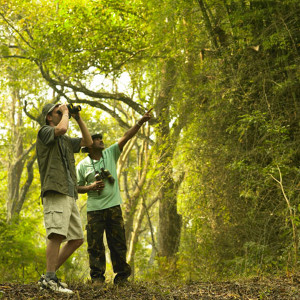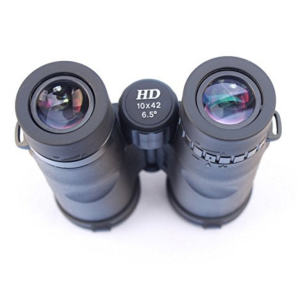 People love to find a favorite hobby. Needlepoint, gardening, tennis, golf…while these are well-known past-times, none can compare to the fastest growing interest group in the US and Canada. Yup. Hmmm. So, just what is this hobby?
People love to find a favorite hobby. Needlepoint, gardening, tennis, golf…while these are well-known past-times, none can compare to the fastest growing interest group in the US and Canada. Yup. Hmmm. So, just what is this hobby?
Birdwatching.
Toss away those penny magazines and turn off your TV. Park the golf clubs in the garage and throw those tennis balls in the locker room. Birds are the new celebrities. Uncover those binoculars and find your favorite walking shoes – there are avians afoot…nope, “there are avians a-wing!”
It’s time for you to become a birder.
If you want to find an activity that embraces conservation, outdoor activity, exercise and self-improvement goals you have found it. Birdwatching can be enjoyed by anyone from the age of 5 to 95, from high-energy athletes to those with specialized goals. Jump into birdwatching to the level and expense that suits your free time and budget. Hit the stores to find that ideal “5 grand” camera… or just pull out the lawn chair from the back porch.
Many people get “into” bird watching after setting up a bird feeder or birdbath. Once we see the amazing variety of birds winging in – it’s no wonder we can’t resist getting hooked on birding. This is the most fulfilling way to begin your birdwatching hobby. Purchase reasonably well-made feeders. Chose those that are NOT made of plastic, as squirrels, rodents and weather exposure will degrade your feeder; often within one season. Buy good-quality seed mix (those without dust, debris, sticks or too much red millet and corn) and sunflower seeds. If you are not sure which seed to use, you can never go wrong by setting out black oil sunflower. These seeds attract nearly every species of bird including many insect eaters like nuthatches and stunning birds such as cardinals and grosbeaks.
Have a good field guide with you as you sit and watch the birds feeding. Birdwatching becomes more fulfilling as you gain expertise. Follow these tips to find out just what you need to do!
But… birdwatching is all about listening.
Bird Investigation Department
The first step to success is doing… nothing. Be still and wait. Observe the environment, being particularly aware of movement and activity around trees and brush. This is crucial to locating the birds. You need to be very “present.” You are a tracker, aware of your “now.” Listen for leaves moving and branches twitching, watch for moving tree limbs, note any movement in your peripheral vision – you are now a BSI – bird scene investigator.
Sherlock Holmes was right. “The world is full of obvious things which nobody by any chance ever observes.” Once you view yourself as an integral element of nature, the “loudness” of what is happening around you becomes readily noticeable. You will hear birds before you see them. Songbirds are master vocalists. Enjoy the song of the Wood Thrush below.
Ornithologists use bird songs as their primary bird identification tool, and as the most efficient way to record populations. Do what the ornithologists do, focus on one call and notice the uniqueness of its volume, pitch, rhythm, tone and notes.
Birds sing to attract mates, hold territory or to find each other. Songs vary by season, daily conversational needs, time of day and by the bird’s age. You can learn the distinct calls and begin to understand what each bird is saying! Learning the variety of calls by the birds that frequent your yard is important and
uncovering how and why songbirds vocalize is fascinating. Birds and humans share the FOXP2 gene (the language gene). And just like people, many birds must learn their language in a critical period of childhood…or nestling-hood! The baby birds listen to their parents vocalizing and then begin repeating the song until they have it “down pat.” Listen for those birds that continue to add to their vocabulary by mimicry. We think of parrots doing this, but catbirds and mockingbirds are master impersonators.
When to listen
Early morning and twilight are “hot” times for singing. Cornell Lab of Ornithology offers an easy-to-use, song guide identification search on their website. Peruse through the photos, behavior and location areas to help you quickly locate a species you want to see or have just sited. There is also a link to the Macaulay Library and its internationally renowned archive of animal vocalizations.
Tips
Begin your birding adventure by familiarizing yourself with the birds likely to visit your watching spots. Most of the available bird information pertains to the United States and Canada – so a simple search will yield fast results. Visit bird club websites and youtube channels top see what birders in your area are discovering.
Learning how to recognize bird species is just like any form of learning – never limit opportunities to pick up information. Nature shows on television, bird journals in local newspapers, and local naturalist groups all ideal resources. One of my favorites resources though is a video blog by Lab of Ornithology. Below is the first video of the series.
Jot down bird physical characteristics
- Feather shape and color, beak shape, leg and foot shape etc.
- Learn the term used for these in the ornithological field guides.
Terms (points of a bird): crown, tufts, coverts, primary feathers, rump, throat, breast, shank or wing bars.
Classifications.
Birds are categorized into groups – this makes field identification easier. Break down your sighting into where and what. Was the bird found at the shore, in the water, in a tee, flying in flocks or soaring? Was it flying alone or in a formation? What was the bird doing… was he scratching in the leaves (Rufous-sided Towhee) or was she eating your blueberries (Catbird)?
Types of behavior patterns and habitats:
- Bird of prey or scavenger – hawk or owl versus vulture.
- Perching birds or walking birds – blue jay versus bobwhite or starling.
- Water or shore bird – hooded merganser or loon versus crane or sandpiper.
Once you narrow these characteristics down, you can identify your subject. If you see a similar silhouette of a bird at your feeder – deduce from that: medium size, crest, black eye ring, red plumage = cardinal and not a blue jay!
Tools
- Binoculars
 Cheapest is never the best! Choose lightweight binoculars that are designed for birdwatchers. Binoculars are a must for viewing birds in order to pick up on details such as feather patterning and color, beak shape and small details. An great value buy for birdwatching binoculars are the Banner Perception HD. They are small and mobile while also being waterproof and really durable.
Cheapest is never the best! Choose lightweight binoculars that are designed for birdwatchers. Binoculars are a must for viewing birds in order to pick up on details such as feather patterning and color, beak shape and small details. An great value buy for birdwatching binoculars are the Banner Perception HD. They are small and mobile while also being waterproof and really durable.
- Field Guides
A good birder’s guide is necessary for quick identification. Don’t rely on online sources, as they will not be “handy” or “at-hand” when you need to locate a bird quickly. This is particularly true if you are in the field. Books offer tips and identification information, delineating species by type/silhouette and similarity – birds of prey, water and shore birds, game birds, swallows, finches, warblers or woodpeckers. This makes finding your recent sighting a snap.
Cornell University’s “Lab of Ornithology” recommends the following books: Birds of North America (Kaufman Focus Guides), Peterson’s Series and The Sibley Guide to Birds.
- Clubs and Societies
Join a birder’s club! Check out online “clubs” and organizations. The Audubon Society has chapters in every state. Contact the Audubon Society to see what is available in your area. Your favorite birding supply stores have blogs and birders available to answer your questions and offer tips for attracting more songbirds to your yard.
More Resources
Visit some of these websites. Learning about birds is easy and fun. The Internet is blossoming with fantastic sites that you can enjoy and interact with. It’s time to get birding!
- NationalGeographic Society – http://animals.nationalgeographic.com/animals/birding/backyard-bird-identifier/All About Birds
- Cornell University is All About Birds – http://www.allaboutbirds.org/Digital Atlas
- Audubon Society – http://imnh.isu.edu/digitalatlas/bio/birds/main/ident/bvk6sb.htmAudubon Digital Field Guide
